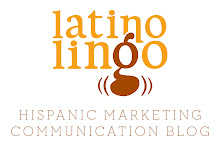The Associated Press is reporting that while minority enrollment and graduation rates are increasing at Connecticut colleges and universities, Hispanic students remain underrepresented.
The story, carried in some state papers including the
New Britain Herald, says Hispanics receive less than 5 percent of the undergraduate degrees awarded at Connecticut's four-year universities, according to a report issued Wednesday by the state Department of Higher Education.
"The disparity worries education officials because the state's Hispanic population is soaring and, in the long run, Connecticut's professional work force will not reflect the state's demographics unless the trend is reversed," the story says.
The story reports on another report released Wednesday by the Department of Higher Education that shows a growing gap between male and female college students. Women now comprise almost 60 percent of the state's college students.
The Higher Education Department's office of educational opportunity also says black and Hispanic students are disproportionately heading to two-year programs, the story reports.
This is an urgent issue for Connecticut because of the rapidly-growing Hispanic population. According to the U.S. Census, Hispanic population has gone up from about 200,000 in 1990 to well over 400,000 in the 2005 estimate.
While many universities have begun to make some outreach efforts, such as exhibiting at fairs and expos or through some community outreach efforts, I have seen very few actually make a significant effort to do so. Those that do usually place ads that show a Hispanic student or a group of Hispanic students thinking that is enough. It is not enough merely to show some "brown" faces in a Spanish ad not specifically designed to target the Hispanic population.
More money is needed, yes, but so is a greater effort to truly seek to tap into the market. That usually means approaching the market with the respect it deserves, with a serious budget and not just a few dollars conjured up for a quick media buy, and a culturally relevant message.
As a product of the University of Connecticut (go Huskies!) this is an issue I'm particularly interested in and will continue to monitor for you.

